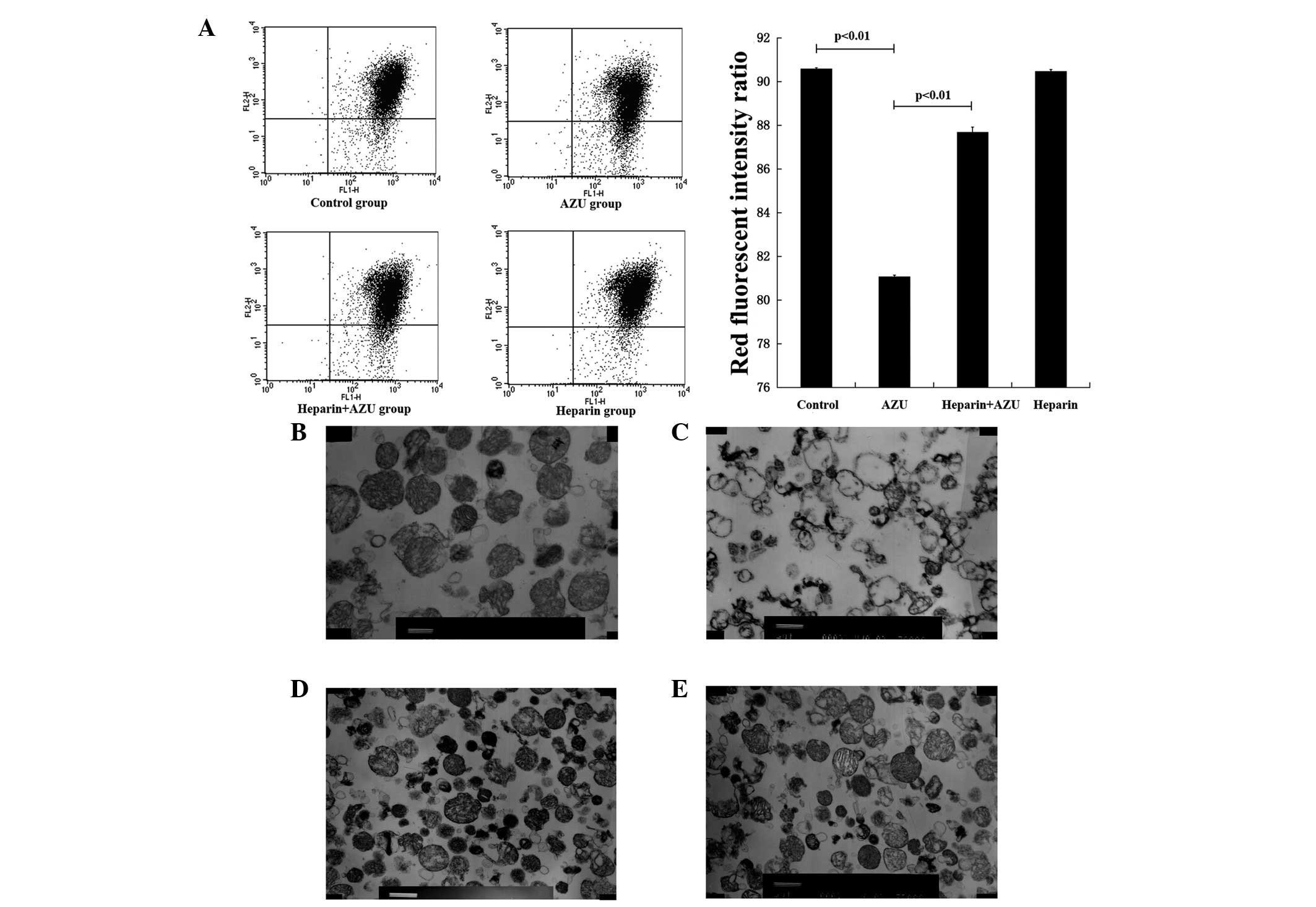Azurocidin‑induced inhibition of oxygen metabolism in mitochondria is antagonized by heparin
- Authors:
- Published online on: August 29, 2014 https://doi.org/10.3892/etm.2014.1939
- Pages: 1473-1478
Metrics: Total
Views: 0 (Spandidos Publications: | PMC Statistics: )
Total PDF Downloads: 0 (Spandidos Publications: | PMC Statistics: )
Abstract
Heparin is a potent blood anticoagulant that has been demonstrated to attenuate inflammatory responses in sepsis. Sepsis is considered to be a microcirculation‑mitochondrial distress syndrome. Azurocidin (AZU), a protein with strong heparin‑binding potential that induces inflammatory responses and apoptosis, has been shown to increase the permeability of endothelial cells and induce the prognosis of sepsis. However, the function of AZU in mitochondrial oxygen metabolism has yet to be reported. The aim of the present study was to investigate whether heparin exhibits an antagonistic effect on AZU‑induced mitochondrial dysfunction in human umbilical vein endothelial cells (HUVECs) and to further investigate the possible underlying mechanisms. HUVECs were randomly assigned into blank control, AZU, heparin plus AZU and heparin groups. The blank control group were incubated with phosphate‑buffered saline for 12 h, while the AZU group were incubated with 1 µg/ml AZU for 12 h. The heparin plus AZU group were incubated with 100 µg/ml heparin for 2 h, followed by the addition of 1 µg/ml AZU and incubation for 12 h. The heparin group were incubated with 100 µg/ml heparin for 12 h. Flow cytometry was used to determine the mitochondrial membrane potential, while electron microscopy was used to determine the mitochondrial morphology. Western blotting and quantitative polymerase chain reaction were used to determine the protein and mRNA expression levels of Cox II in the mitochondria, respectively. Western blotting was also used to evaluate the concentration of AZU in cytoplasm, along with immunofluorescence analysis. AZU was revealed to decrease the mitochondrial membrane potential, reduce cytochrome c oxidase subunit II expression and destroy the morphology of the mitochondria. Heparin exhibited an antagonistic function on these processes and inhibited the endocytosis of AZU by HUVECs. In conclusion, the results indicated that AZU inhibited the oxygen metabolic function in mitochondria, and this function was effectively antagonized by heparin via the inhibition of AZU endocytosis by HUVECs. Therefore, heparin may be a potential therapeutic agent for treating mitochondrial dysfunction in the future.












